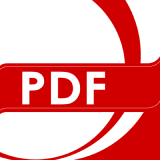Page Navigation
- How to Extract Pages from a PDF on Mac
- How to Extract Pages from PDF for Windows
- Extract PDFs vs Split PDFs: What's the Difference?
- The Purpose of Extracting Pages from PDFs
- Best Practices for Extracting PDF Pages
- FAQs: Extract Pages from a PDF
How to Extract Pages from a PDF on Mac
Do you ever open a huge PDF only to realize you need just a few pages? You will not want to send the entire document! So extraction for PDF pages on Mac is your best option.
Students, professionals, or anyone handling digital files should know how to pull pages from PDFs efficiently. Let’s separate PDF pages from your original file with PDF Reader Pro and the built-in free tool Preview on your Mac operating system.

Navigate, edit, and
convert PDFs like a Pro
with PDF Reader Pro
Easily customize PDFs: Edit text, images,
pages, and annotations with ease.
Advanced PDF conversion: Supports
multi-format document processing with OCR.
Seamless workflow on Mac,
Windows, iOS, and Android.
Method 1: Extracting PDF Pages with PDF Reader Pro
1. Open PDF Read Pro on your Mac desktop;
2. Enter the reading page and click Page Edit panel on the toolbar from the top left;
3. From the page overview, select the pages you want to extract -> Click Extract;
4. You can choose to extract Each page in a separate file or Delete pages after extraction;
5. After extracting, the extracted pages will be saved as you like.
PDF Reader Pro is one of the best tools to extract pages from a PDF document on Mac. Besides extraction, our PDF editor also supports inserting, replacing, splitting, and reversing PDF pages to better organize and manage your PDF files.
Method 2: Extracting PDF Pages by Preview
Your Mac comes with a free default PDF tool you already have. It's called Preview. The best part of Preview is that it can extract a page from PDF. The following instructions will show you how to extract certain pages from PDF in Preview.
1. Open your PDF document with Preview on the desktop;
2. Go to the main menu -> Display the File and click on Print…;
3. In the Print window, you can set the pages you want to extract from the PDF;
4. Click the button at the left bottom and select the option Save as PDF…;
5. Then click Save to save your extracted PDF.
As you can see, to extract certain PDF pages is an everyday task. Fortunately, macOS users have a native application Preview to extract pages from a PDF for free. After extraction, you can share split PDFs with peers, and email small-size extracted PDF pages more easily.
How to Extract Pages from PDF for Windows
Many PDF tools can help you extract pages from PDF files for Windows. For example, when you want to send just the pricing section of a proposal or save only your boarding pass from a multi-page ticket, you can use extraction tools on Windows to save the pages as a separate PDF file.
This part will recommend efficient, powerful, and cost-cutting PDF Reader Pro and the free built-in Google Chrome browser to separate pages from your PDF files.

Navigate, edit, and
convert PDFs like a Pro
with PDF Reader Pro
Easily customize PDFs: Edit text, images,
pages, and annotations with ease.
Advanced PDF conversion: Supports
multi-format document processing with OCR.
Seamless workflow on Mac,
Windows, iOS, and Android.
Using PDF Reader Pro for Extraction
1. Launch PDF Reader Pro on your Windows operating system;
2. Open your PDF file and click the Page Edit at the top left toolbar;
3. Select the pages you want to extract, then click Extract;
4. Choose your preferences to save each page as separate files or delete the original pages after extraction;
5. Hit Extract and Save your extracted pages wherever you want to find them.
Congratulations, you’re done! You can now continue to insert, replace, split, and reverse the PDF pages with PDF Reader Pro’s page tools. Of course, our PDF editor also enables you to convert the extracted PDF to Excel, CSV, HTML, and more. Come to download the best PDF Reader Pro editor for Windows!

Utilizing Google Chrome Built-in Features
Need just a few pages from a PDF on Windows? You can extract PDF pages for free right in Google Chrome! This trick is perfect for saving only the important parts of a document. And it's a method to extract PDF pages online! Here's exactly how to do it:
1. Right-click your PDF document in Windows Explorer;
2. Choose Open with Google Chrome;
3. Click the Print icon at the top right of the Chrome window;
4. Find Destination in the pop-up window -> Select Save as PDF;
5. Enter the page numbers you want to extract in the Pages box;
6. Then press Save, name your new extracted PDF, and pick where to keep it.
Note: Avoid choosing Microsoft Print to PDF as your PDF because it will save your document as an image rather than a searchable PDF file.
Your Google Chrome browser can extract multi-page PDFs instantly and freely. Also, it’s a way to extract pages from a pdf online. No extra software is needed. Just employ this built-in free feature to extract the wanted pages from PDFs and streamline your workflow.
Extract PDFs vs Split PDFs: What's the Difference?
People often use these two terms the same way for they may work similarly. However, each tool means slightly different things depending on the tool you use.
Split PDF pages means dividing one file into multiple smaller files. You choose which pages go into each new document. The original PDF stays intact while you create separate files containing portions of its pages. For example, you can split a 10-page PDF into two 5-page PDF documents separately.
Extracting pages from PDF is to pull specific pages from a document. By default, this creates copies while keeping your original PDF untouched. But you can also choose to remove those pages from the original file entirely.
Different tools may define these terms slightly differently, so pick one that matches what you need.

Navigate, edit, and convert PDFs
like a Pro with PDF Reader Pro
Easily customize PDFs: Edit text, images,
pages, and annotations with ease.
Advanced PDF conversion: Supports
multi-format document processing with OCR.
Seamless workflow on Mac, Windows, iOS,
and Android.
The Purpose of Extracting Pages from PDFs
Extracting pages from a PDF has various purposes, and each contributes to efficient document management and customization:
1. Sharing Relevant Content: When sharing a lengthy PDF, specific page extraction allows you to share only the relevant content with others. It will simplify communication and reduce information overload.
2. Creating Customized Documents: Extracting pages is to create customized documents for specific needs. This is useful for writing reports, presentations, or handouts.
3. Sensitive Information Redaction: Page extraction is a part of the redaction process. This allows you to remove or secure sensitive information before sharing the document.
4. Archiving Specific Sections: Archiving specific sections of a PDF will facilitate document storage. It is easier to retrieve and manage information.
5. Collaborative Editing: When collaborating on a document, you can extract pages to simplify multiple editing on specific sections. And this will not affect the entire document.
You can also check our guide in detail to experience the convenience of extracting PDF pages.
Best Practices for Extracting PDF Pages
Use our best practices to ensure things like file security when extracting pages from your PDF file format and potentially merging them into a single file.
1. Use Reliable Software: Utilize reputable PDF editing software like PDF Reader Pro with exceptional PDF tools specifically designed for page extraction to ensure accurate and reliable results.
2. About the Page Range: Define the page you want to extract. It can be a single page, a range of pages, or a combination of specific pages.
3. File Naming Conventions: If you want to create a new document from the extracted pages, you can clarify the file naming ruler to avoid confusion. Take this one step further by adjusting your file name setting.
4. Maintain Document Quality: Ensure that the extracted pages maintain the quality of the original document. Check for resolution, formatting, and any potential errors in our PDF application. It's also worth keeping a backup file.
5. Check Hyperlinks and References: If the original document contains hyperlinks or references, you must verify that they are functional in the extracted pages. Adjustments may be needed depending on the software used.
6. Save As a New Document: Want to create a new document from the extracted pages? You can use the Save As feature to keep the original document intact in your output file.
7. Security and Encryption Methods: Contain sensitive pages from extracted pages? Lock them down with a password or encryption before sharing.
FAQs: Extract Pages from a PDF
Peruse our Frequently Asked Questions section to solve queries about topics like online PDF tools and to make full use of our PDF software's powerful tools.
Can I Extract Multiple Non-Consecutive Pages?
Yes! Modern PDF editors allow extracting any combination of pages - single, sequential, or scattered. Just select your desired page numbers during the process. Works with most standard PDF tools.
Will Extracted Pages Include Annotations and Comments?
This varies by PDF software. Some preserve all markups perfectly, while others may lose them. Always verify with your specific PDF editor before proceeding with important documents.
Can I Extract Pages from a Password PDF?
Yes. If you have the password. The software will request authentication first to maintain document security during the extraction process. Standard security practice.
What Happens to Bookmarks During Extraction?
Bookmark handling differs across applications. While some maintain them automatically, others require manual recreation. Check your software's features list for clarification.
Is there a maximum page limit for extractions?
Technically no, but performance may suffer with huge files. You can split the job into multiple smaller extractions if the documents exceed 100+ pages.
Can I Extract Pages from a Scanned PDF?
Yes, but remember: scanned pages remain as images. For editable text, you'll need separate OCR conversion after extraction. Common limitation with image-based PDFs.
What Happens to Form Fields During Extraction?
Results vary. Some editors preserve interactive form elements perfectly, while others may disable them. Always test with a sample page first to confirm behavior.
Now you've got the key facts about PDF extraction - from password protection to form fields. With this knowledge, you can work smarter with any PDF tool. Just remember to check your specific software's features first.

 Free Download
Free Download  Free Download
Free Download 











 Support Chat
Support Chat